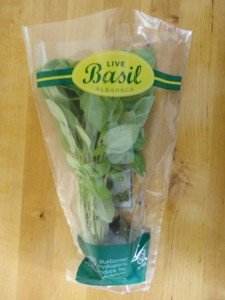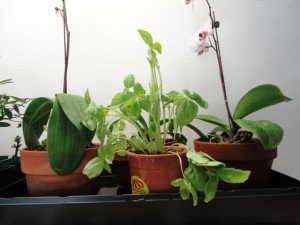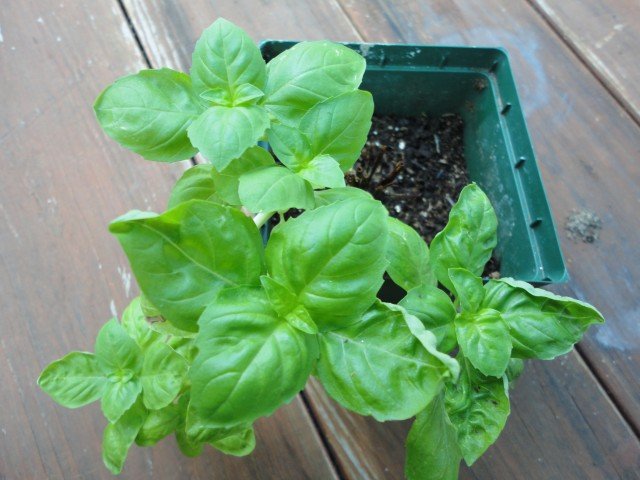In recent years there has been an increase in the selection of fresh herbs available for purchase in the grocery store year round. Initially, these were herbs that had been cut and sealed in plastic packages. More recently, some herbs are being made available even fresher and being offered for sale with their roots intact for they have been grown at hydroponic farms.
One of these herbs available for purchase with the roots intact is herb Basil, also known as Sweet Basil (Ocimum basilicum) an aromatic herb which is an annual favorite for most gardeners and those that grow a Basil in a pot on their patio. Sweet Basil is a part of the Mint family (Lamiaceae), originally native to India and has been cultivated for 5,000 years.
The Basil is very sensitive to cold weather and unless you live where there is no frost or temperatures that reach freezing, Basil will not survive freezing temperatures. Therefore, for most of us, the only means to incorporate fresh Basil into our cooking is to purchase fresh cut Basil or Basil with the roots intact. Personally, I am grateful for these horticultural and packaging advances that allow me to use fresh Basil in my cooking during the colder months, but I am not so keen on the price for one of these plants which typically sells for around $3.00.
In most instances there are enough leaves on one of these plants for two meals to be prepared with a few leaves remaining. Instead of discarding the remaining Basil plant, I attempted to salvage the hydroponically grown Basil by potting the Basil plant in a pot of Seed Starter Mixture (Vermiculite). For the first two weeks, it was “touch and go” with the Basil plant looking like it was going to die. However, the hydroponically started Basil plant established itself and survived.
Although re-purposing a hydroponic grown Basil plant into a pot with soil is not always successful, I have found the following tips to increase the success rate:
- Use Seed Starter Mix (Vermiculite)
- Water well and either place in a sunny location, or under grow lamp lights.
- The plant will let you know when it requires water for the leaves will begin to droop.
- If the bottom leaves turn yellow, this is a good indication that you are over watering the Basil.
- When the weather has turned warm, bring the Basil plant outside in indirect sunlight. Direct sunlight will burn the plant if it has been growing inside for any period of time.
- In a few days, the Basil plant will been conditioned to outside indirect light you can then plant the Basil in your herb garden or into a larger pot and enjoy fresh Basil leaves with your cooking all summer long.
In most locations, Basil plants are available for purchase at garden nurseries, but if you can get a jump on the season by re-purposing a hydroponically grown Basil plant into soil then why not save some money?




